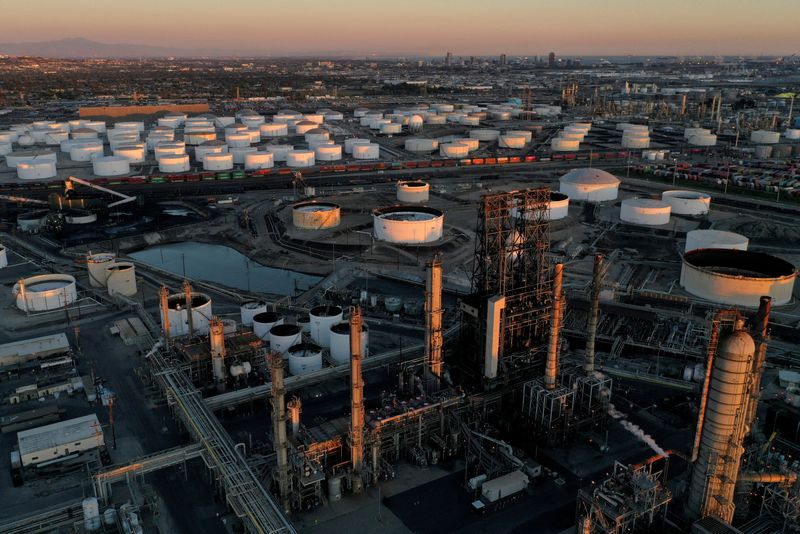
By Arunima Kumar
BENGALURU (Reuters) – Oil prices rose on Wednesday, a day after benchmark Brent hit a one-month low, as a decline in U.S. oil stockpiles and a weaker dollar overshadowed signs of weakening demand in China.
Brent crude oil futures were up 55 cents, or 0.7%, at $84.28 a barrel by 1242 GMT. U.S. West Texas Intermediate crude futures were up 75 cents, or 0.9%, at $81.51.
In the United States, the world’s largest oil producer and consumer, crude oil inventories fell by 4.4 million barrels in the week ended July 12, market sources said, citing data from the American Petroleum Institute.
Analysts polled by Reuters estimated crude stocks would fall by 33,000 barrels. The U.S. Energy Information Administration will release its official storage report at 1430 GMT.
“The government data this afternoon is where the real story is, but the precursor of U.S. oil stocks in the API data does not exactly show much of an effect of Hurricane Beryl and the shutting down of some the infrastructure that stood in its path,” PVM Oil analyst John Evans said.
A weaker U.S. dollar also boosted oil prices. A softer U.S. dollar can boost demand for oil by making greenback-denominated commodities like oil cheaper for holders of other currencies.
Also supporting crude prices was rising geopolitical risk, said George Khoury, global head of education and research at CFI, adding that tensions in the Middle East and Europe could continue to fuel risks.
A Liberia-flagged oil tanker was assessing damage and investigating a potential oil spill after it was attacked by Yemen’s Houthis in the Red Sea, the Red Sea and Gulf of Aden Joint Maritime Information Center (JMIC) said on Tuesday.

Meanwhile, China, the world’s top oil importer, saw its economy grow 4.7% in the second quarter, official data showed earlier this week, the slowest growth since the first quarter of 2023, capping crude price gains.
“Any announcement from the Third Plenum in Beijing this week is likely to shape the market sentiment due to the size and importance of China’s oil demand growth,” said Rystad Energy’s senior oil analyst Svetlana Tretyakova referring to a key economic leadership meeting.
This post is originally published on INVESTING.





